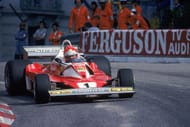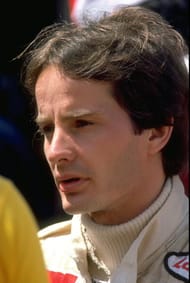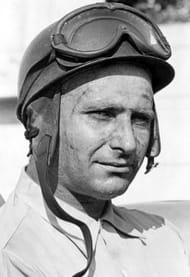Then Ferrari signed an experienced driver and a close friend, Alberto Ascari, who succeeded in winning the first championship title for the team in 1952 and also defended it the next year. Another championship was also won with the help of Juan Manuel Fangio in 1956. Ferrari continued to dominate in Formula 1 throughout the 1950s and its popularity further increased due to successful outings in Le Mans and Mille Miglia. During this time, aside from racing, he also entered the business of producing and selling sportscars, a business which has flourished since then and continues to be so till this day.
The 1950s and early 1960s brought a lot of success to Ferrari, but this was also the period when motor racing was extremely dangerous and it had almost become common for drivers to lose their lives. Ferrari’s team also did not remain untouched by this as during this period seven of Ferrari’s drivers lost their lives which also included his close friends, Alberto Ascari and Giuseppe Campari. Perhaps this was why he chose not to get too involved with his drivers. But the most painful moment for him during this time was the untimely death of his son Dino, the heir to the throne of Ferrari, who died due to muscular dystrophy at a mere 24 years of age in 1956.
The year 1958 brought further success to Ferrari in Formula One as Mike Hawthorn triumphed in winning the world title. This was followed by further championship successes in 1961 and 1964 with Phil Hill and John Surtees respectively.
Ferrari always believed that the car had a greater role to play in winning than the driver. It is also supposed that during accidents, he was more concerned with the condition of the car than that of the driver. As a boss and team principal, he was known to be ruthless to his team and drivers. In order to win, he did not hesitate in creating a conflicting environment between his drivers, so that they would push each other in the race and help bring victories to the team.
By the late 1950s, other teams and especially British teams like Cooper, BRM and Lotus started challenging Ferrari and dominating Formula One. Enzo Ferrari always believed in horsepower in a car, he hated the concept of aerodyanmics which was being utilized by the new teams. He believed “Aerodynamics are for people who can’t build engines”.
After 1964, for several years his team did not garner much success. In 1969, due to increasing expenses, he had to sell a 50 percent share of his team to the FIAT Motor Group, who allowed him to remain in operational command of the team. Since then, the FIAT Group has retained its control over Ferrari and now owns 85 percent shares of it (as of 2008).
In the early 1970s, he spotted a young Austrian driver Niki Lauda, who had signed with BRM in 1973. By 1974, he signed Lauda alongside the more experienced driver Clay Regazzoni. Lauda immediately showed his prowess and by the end of the season, provided another world championship to the team.

30 May 1976: Ferrari driver Niki Lauda in action during the Formula One Monaco Grand Prix in Monaco. \ Mandatory Credit: Tony Duffy /Allsport
The 1976 season is remembered mostly for the rivalry between Niki Lauda and James Hunt, in which Lauda returned to racing within a few weeks after a near fatal accident to challenge Hunt for the title. But this season also signaled a strain in the relationship between Lauda and Enzo Ferrari due to events at the Japanese Grand Prix, the last round of the season. It was raining heavily during the race, and Lauda was in contention for the championship, but he retired from the race due to safety concerns and thus eliminated all chances for Ferrari to win the title. This made Ferrari furious and this damage in their relationship was never undone. Despite this, Lauda stayed on with the team in 1977 and won another world championship, before departing in 1978.

Apr 1980: Portrait of Scuderia Ferrari driver Gilles Villeneuve of Canada before a Formula One Grand Prix. \ Mandatory Credit: Steve Powell/Allsport
After Lauda left, Jody Sheckter helped Ferrari in winning another world title in 1979. This would be the last time during Ferrari’s lifetime that he would witness a driver win a world championship with his team. By this time, the highly regarded Canadian driver Gilles Villeneuve had also joined the team alongside Sheckter. Ferrari had spotted immense talent in him and found his driving to be similar to that of Nouvlari. He proved right in his potential, as Villeneuve had the talent to push and be competitive even in those cars which were no match against the others on the grid. In 1981, he was joined by another young driver, Didier Pironi. Both of them had the ability to lead the team towards another world championship, but their careers were abruptly ended the following year. In 1982, Villeneuve had a fatal accident during a practice session at Zolder, Belgium and Pironi’s legs were badly injured due to an accident at Hockenheim, Germany. After this, Enzo Ferrari’s team had moderate success during the 1980s.
Enzo Ferrari died in 1988 in his sleep. He did not live to see the glory which was to be attained by Michael Schumacher with his team in the future. But he has left behind a legacy which has been responsible for making Ferrari more than just a company but a phenomenon. Such has been the impact of Ferrari that even people who don’t know anything about automobiles, have heard the name of Ferrari. He is the one responsible for making Ferrari one of the most famous and beloved racing teams and car manufacturers in the whole world. The legacy which he has left behind is still growing and will continue to grow for numerous generations to come.
Credits
“Timewatch” The Secrets of Enzo Ferrari – BBC
www.grandprix.com

